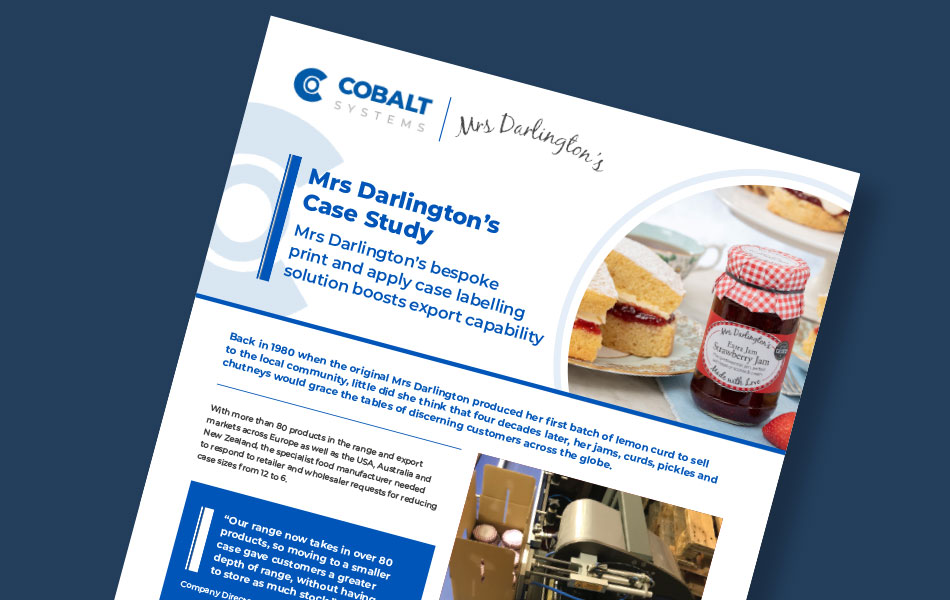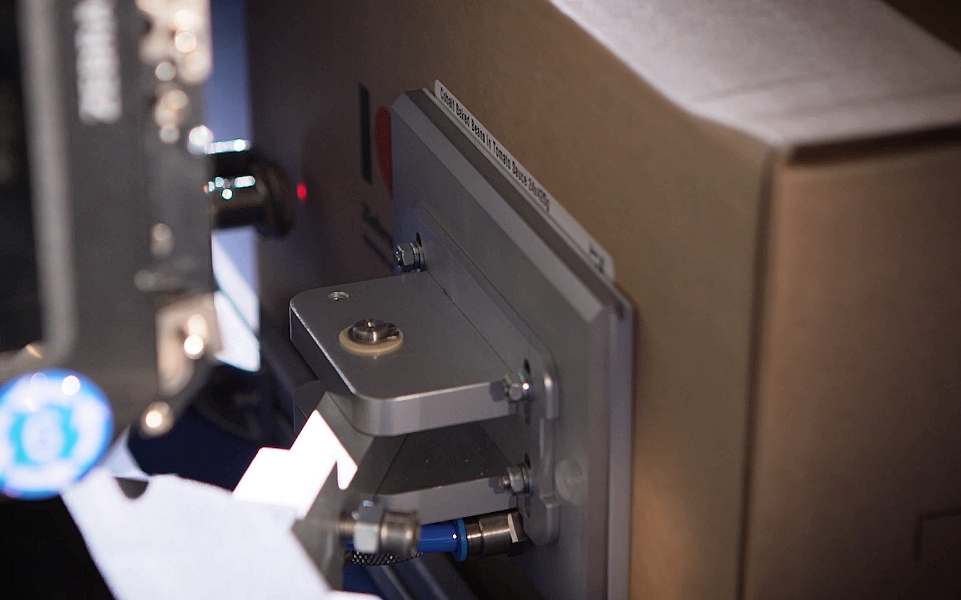Back in 1980 when the original Mrs Darlington produced her first batch of lemon curd to sell to the local community, little did she think that four decades later, her jams, curds, pickles and chutneys would grace the tables of discerning customers across the globe.
With more than 80 products in the range and export markets across Europe as well as the USA, Australia and New Zealand, the specialist food manufacturer needed to respond to retailer and wholesaler requests for reducing case sizes from 12 to 6.
“Our range now takes in over 80 products, so moving to a smaller case gave customers a greater depth of range, without having to store as much stock,” explains company Director Sarah Darlington.
While this presented a major logistical hurdle, it also offered a considerable opportunity to automate the case labelling operation. At the time, labels were being printed in house and applied by hand. The manual process was already struggling to keep pace with production volumes and the introduction of smaller cases, plus foreign language requirements were the catalysts to look for an automated print and apply solution.
At the point in time when the search for a print and apply provider was underway at Mrs Darlington’s, Cobalt Systems ran a Technology Day for local manufacturers to see how print and apply technology works and can be integrated into existing production lines.
Impressed with what the technology could deliver, Cobalt was asked to design a solution that would work for Mrs Darlington’s.
“The biggest problem was that we didn’t have a lot of space. We needed someone who was prepared to work with us to get round this issue, rather than shipping a standard machine from Germany and saying “that’s that”,” says Darlington.
The production facility setup meant there was only one location where the system could be installed which meant an entirely bespoke arrangement to enable labels and ribbons to be loaded and changed.
Chris Hunt, Sales Director at Cobalt explains: “We had to design a bespoke chassis to hold both the conveyor and the label applicator, whereas ordinarily the applicator would be located above.
In this configuration, our NEXUS 20 Linear print and apply system is able to dispense labels upwards onto a vacuum pad, which applies barcode labels to cases as they pass on the conveyor.”
Although the machine itself can run at speeds of 55 labels per minute, at Mrs Darlington’s cases are manually loaded onto the conveyor for labels to be printed and applied with the name of the product, country-specific bar code, logo and best before date.
Thanks to the pertinent information being held in a database, operators have no responsibility for label data which makes for rapid changeover of labels for the different products. The intuitive touchscreen interface means operators now only need to select the appropriate template which also extends to foreign languages.
For Mrs Darlington’s, the automation project has been a great success. “The Cobalt labeller has enabled us to make the case labelling operation more efficient, increase product traceability and give our products a more professional presentation,” says Darlington.




